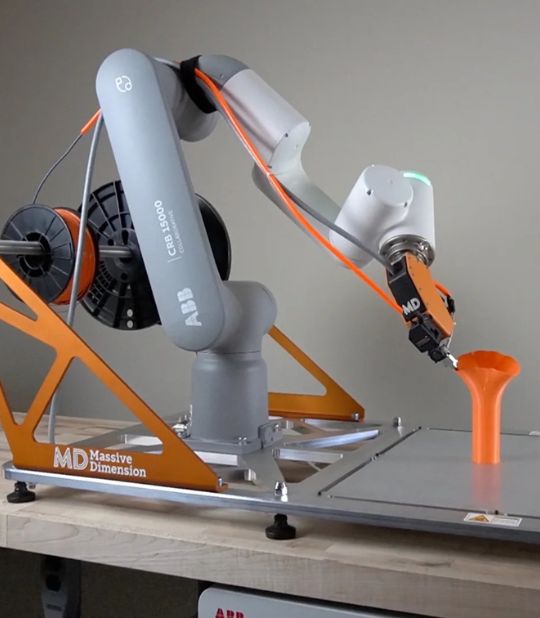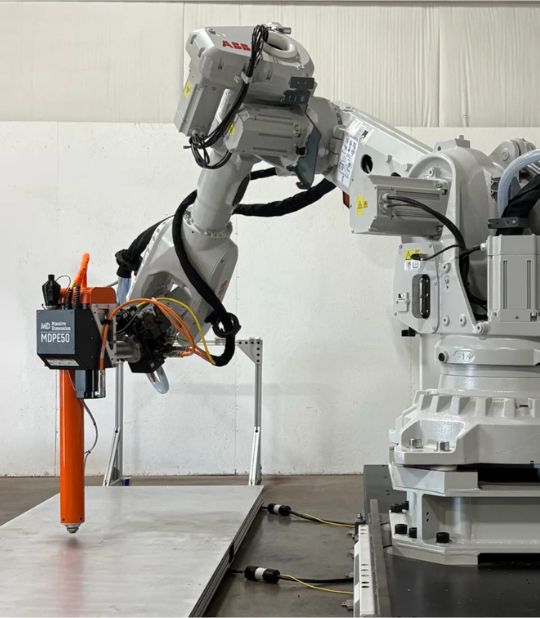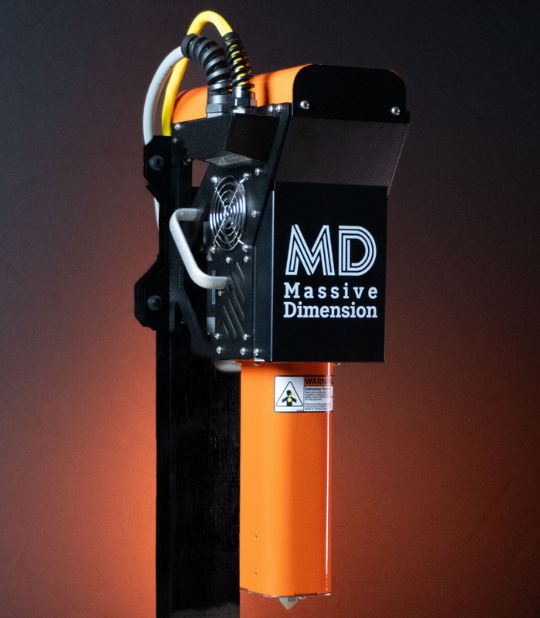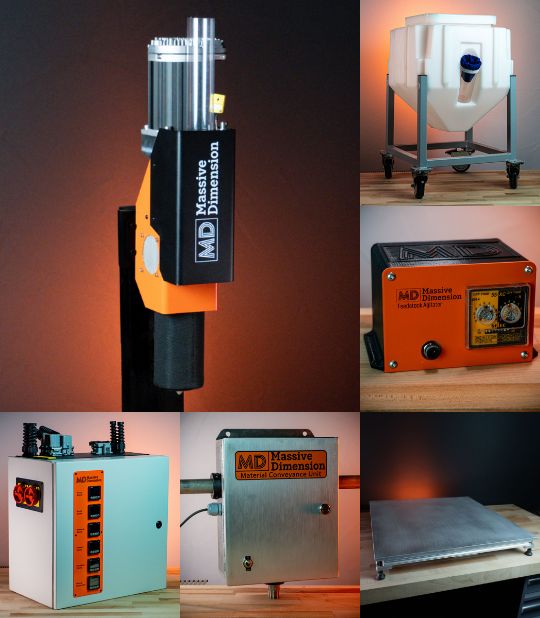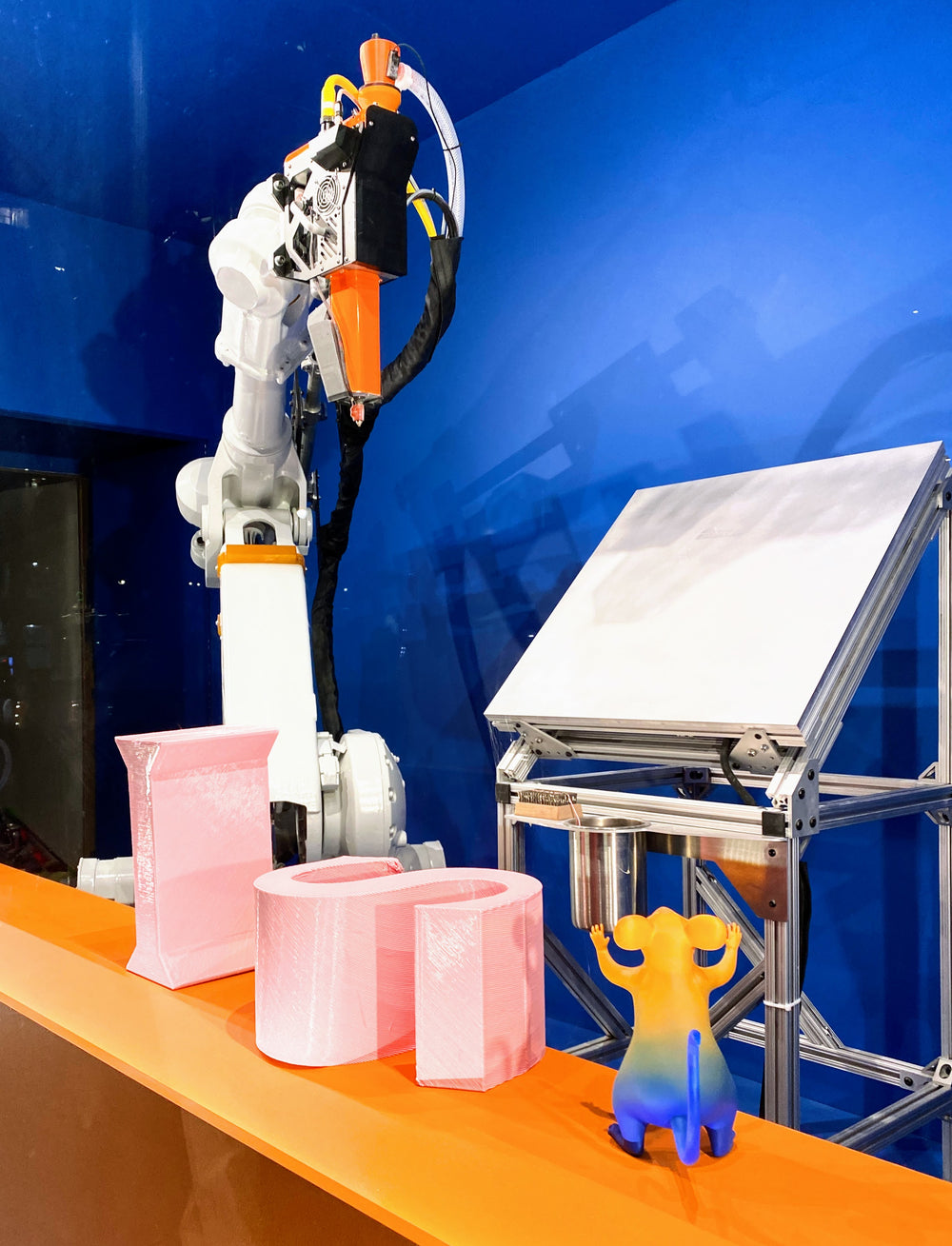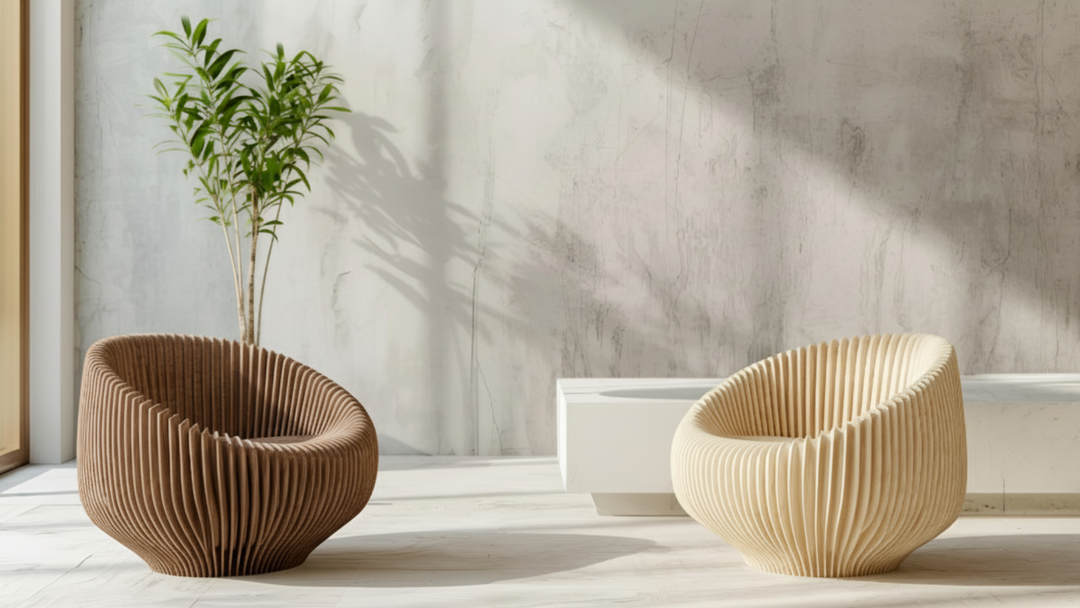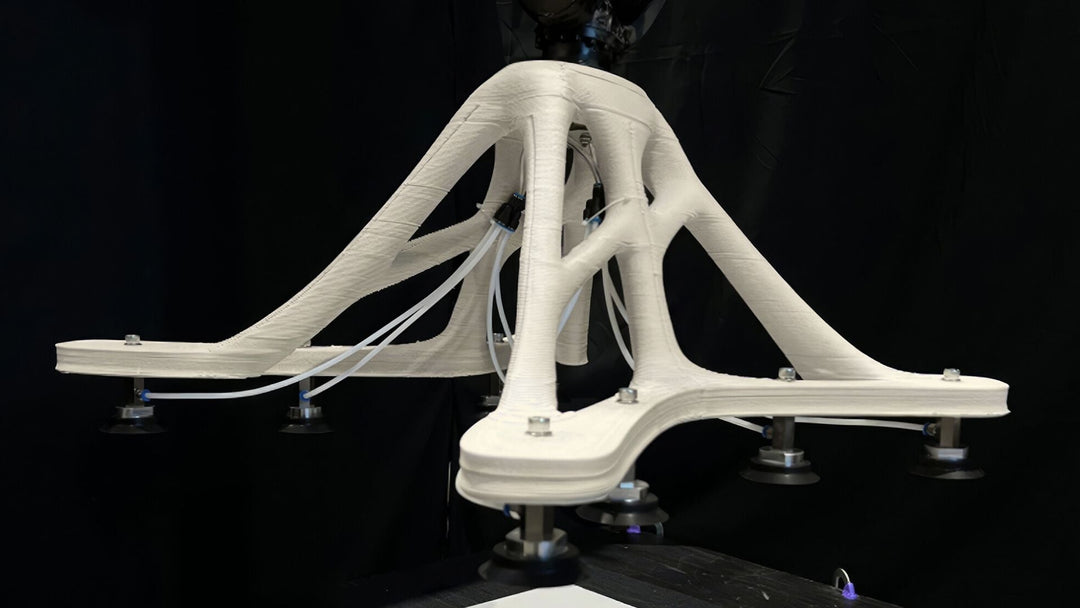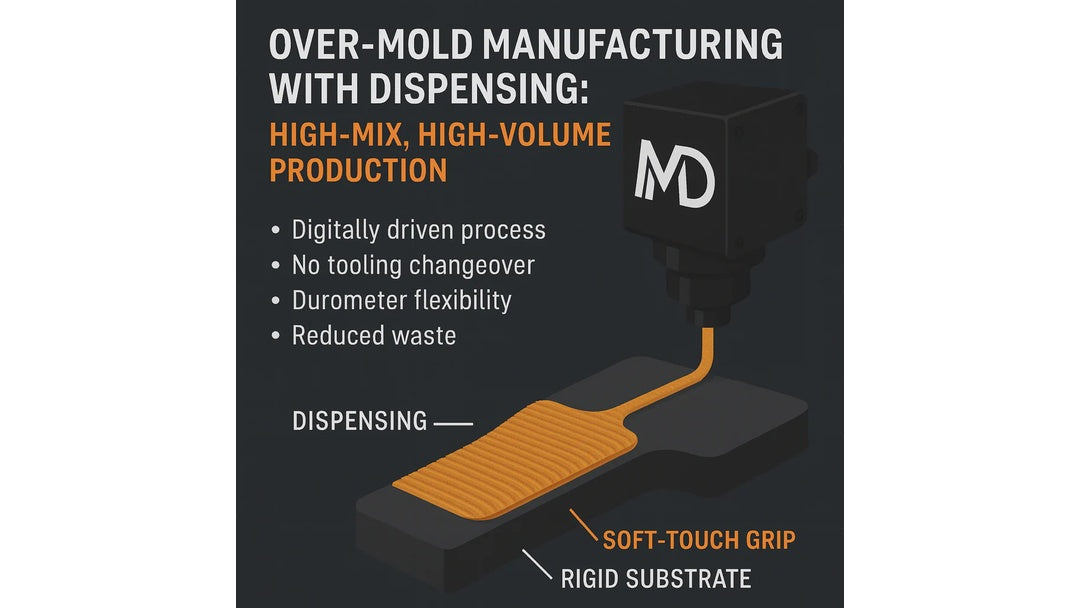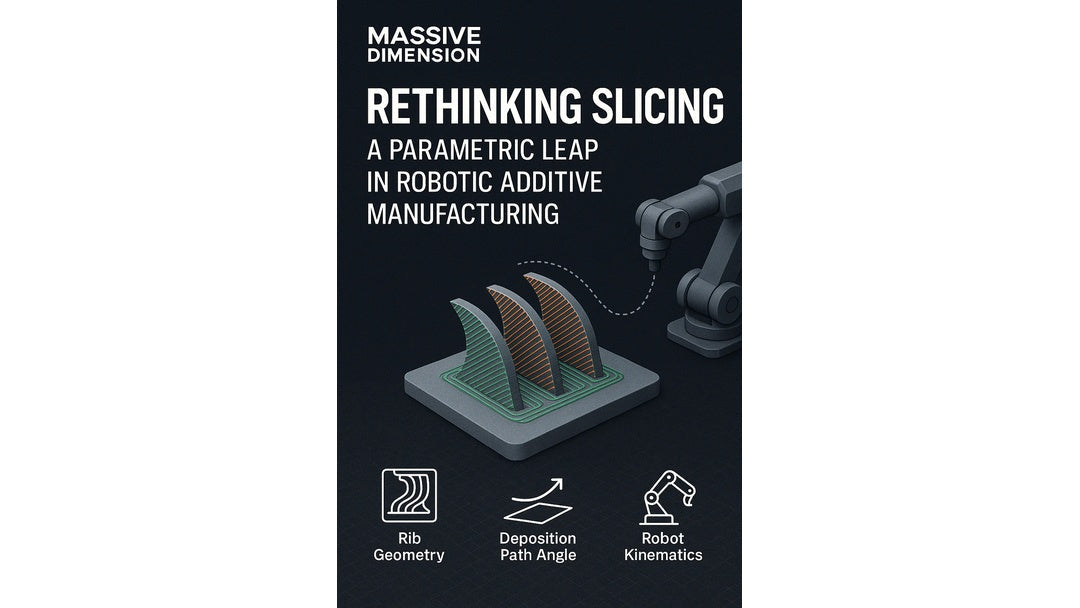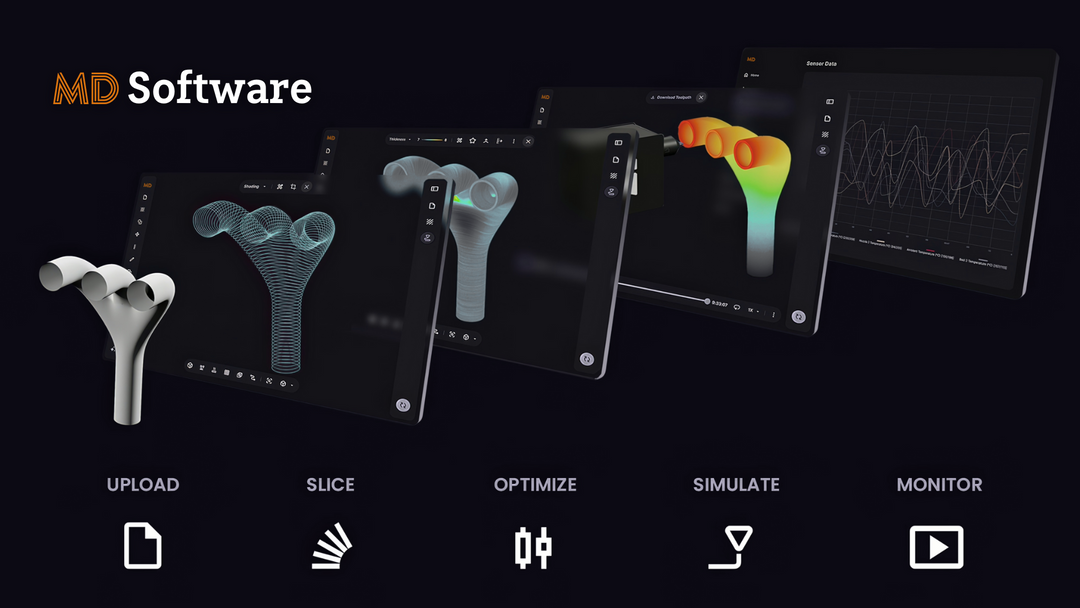3D Printed Structures: Buckminster Fuller’s Fly’s Eye Dome - Part I
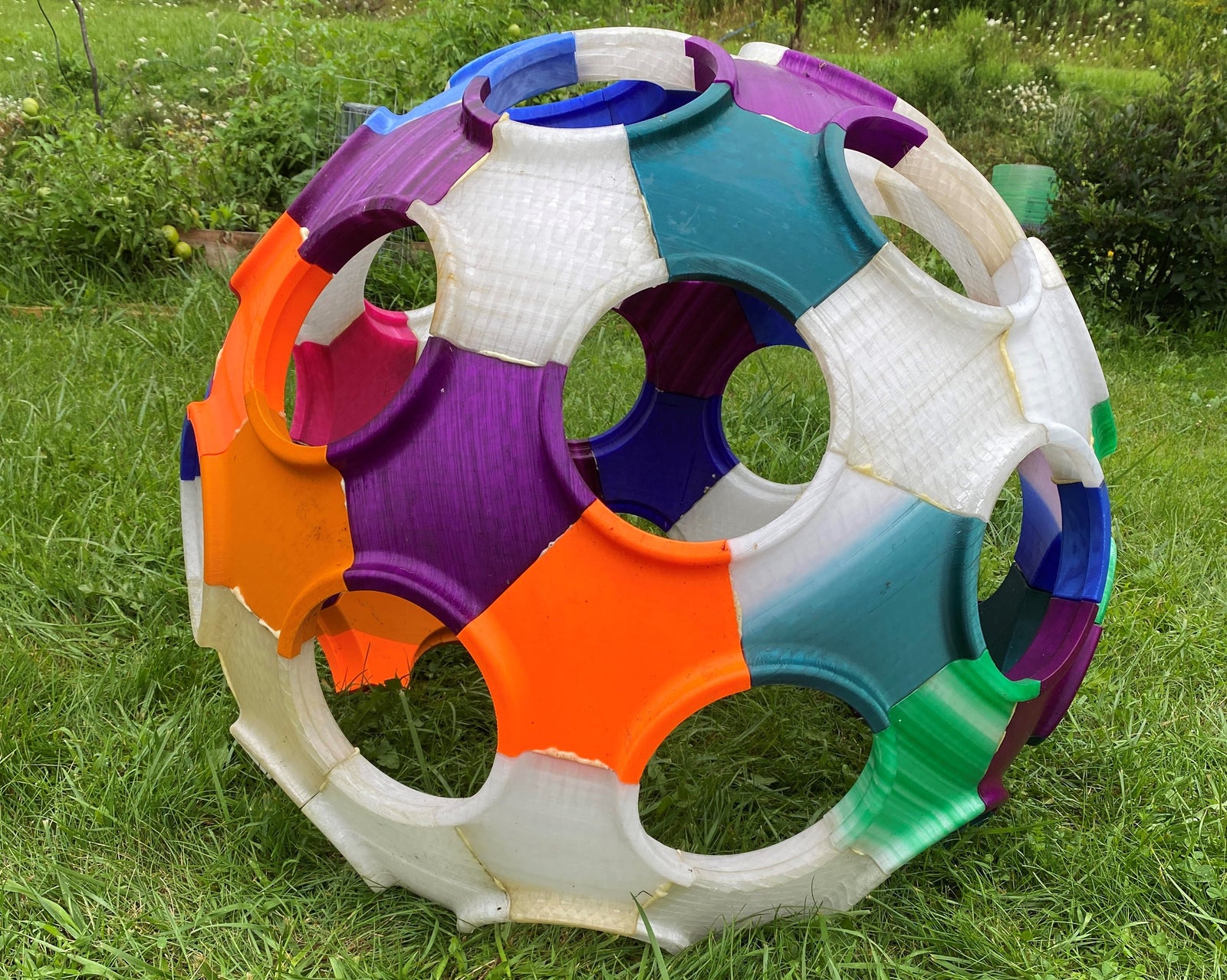
Buckminster Fuller, one of the greatest American thinkers of the twentieth century, patented the Fly’s Eye Dome in 1965. He dubbed it an “autonomous dwelling machine” and saw it as an answer to the housing crisis of humanity- a prototype for a home that could be easily manufactured, efficiently transported, and rapidly assembled. This would make it economical, and furthermore, it would be adaptable to the needs of its inhabitants. The structure relies on tension and compression to be self-supporting and can be scaled to any size while maintaining this state of suspension. The entirety is made up of a single repeating piece or block which can be used to make a complete sphere, or as is the case with several of his prototypes, the sphere is sliced through by a plane perpendicular to the earth and sat upon a level foundation, as in the picture above. Fuller envisioned the openings in the pattern of the dome not just as windows, but also as possibilities for mounting modular sustainable additions such as solar panels or water collection systems. In many ways, Fuller’s aspirations with the Fly’s Eye design have been taken up in contemporary times by lifestyle movements such as tiny home living and passive or net-zero homes.
Fuller’s original prototypes were constructed from layers of fiberglass, laid in molds then bolted together to form the structure. These materials were entirely “space-age” for the time, but Fuller died in the 80s and never lived to see the invention of contemporary additive manufacturing. We like to imagine that Buckminster would have loved the advent of the 3D printer - which demonstrates his famous adage of making the “most possible advantage with the least cost”. Here in the MD lab, we found ourselves wondering if 3D printing could help revive this idea of the universally affordable home and if we could make one ourselves with just a single printer.
We started this project with an .stl file created by Etsy user IndustrialCre8tions aka Joe LaRose. The file is a single print that repeats sixty times to comprise a complete sphere, each piece having three mating surfaces with mortise and tenon joints that interlock to unify the structure. At the original scale, each piece is about 3”x3”. We printed a single complete model at the original scale on a Prusia just to see how the whole assembly would go together, then began running test prints on our MDPH2 Pellet Head Extruder mounted on the SCARA movement system in the MD lab. Some of the first proofs were around 12”, then grew to 16”, then grew further. We decided to settle on a run of 24” tall pieces. Next, we had to tweak print settings to try to arrive at a piece that would be structurally strong but print within a reasonable time frame. Initial proofs had just a single wall with 30 percent infill, though this was revised to instead have double walls (total of 6mm thickness) and only 15 percent infill. With a 3.0mm nozzle the layer height was set to 1.5mm, though Cura’s adaptive layers setting was utilized to shrink the layers to as short as 1mm in sections featuring more difficult overhanging geometry.
The final feature we had to fine-tune was the tolerances in the mortise/tenon assemblies. Though the original file has excellent tolerances for the original intended size, we found that when we scaled the model up the tolerances were too tight. We opened up the mortises a bit to gain some clearance, added a sloped roof to the bottom mortise to aid with bridging, and put chamfers on the underside of the tenons where overhung printing had encouraged a bit of droop that brought the tenon out of spec. Our final proof has extra wiggle room in the joints, with the intention of the addition of adhesive for the final assembly.
Each print takes about twenty-two hours to complete and each piece weighs around twenty pounds. Therefore, the finished assembly will weigh 1200 lbs. This means we will have to transport the pieces in smaller loads to the final site and assemble them there. The pieces have been printed with LX-175 PLA because we have vast quantities of it, an exciting prospect would be printing the same dome from regrind! We have currently printed one quarter of the required pieces for the final assembly, and are looking forward to the challenge of putting together the entire dome. We will post an update when we are finished with construction, which at our current printing pace we hope will take place in the fall. Check back in to see how our 3D printed structure plays out!
Below are some photos from the experiments:
1- Fuller's Fly's Eye Dome

2 - Embiggening proofs

3- Cura slicing

4- Trial five piece assembly

5- Building block stock

6- Mini dome proof

Below are some videos from the experiments:
1. Timelapse video of printing one of the first small proofs on the MDPH2 - Part 1 of 2
2.Timelapse video of printing one of the first small proofs on the MDPH2 - Part 2 of 2
